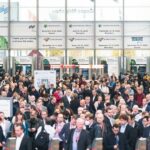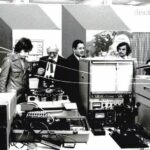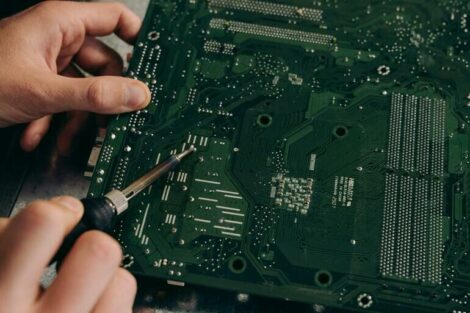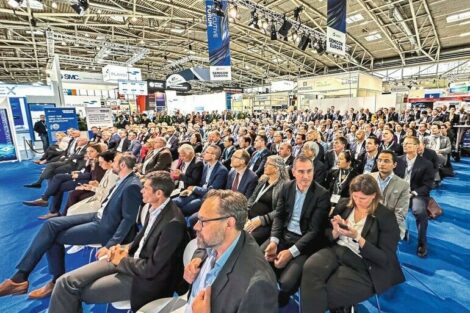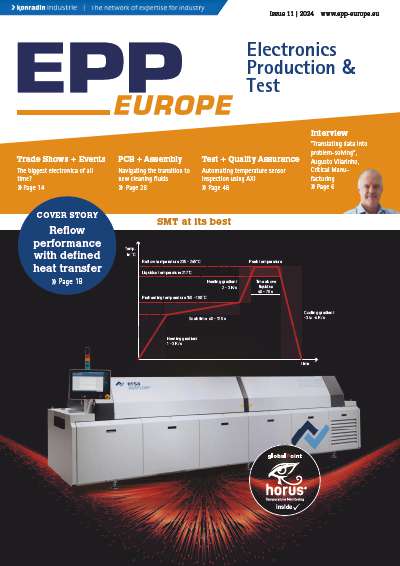In the two years since the last electronica fair was held in November 2022, supply chains have stabilised, inflation has slowed, and AI has taken over – well almost. Certainly, the industry is making better use of this technology in manufacturing processes than ever before – for everything from board design to predictive maintenance. Other familiar buzzwords – sustainability, e-mobility, smart energy, automation, and connectivity – will dominate the exhibition halls as the expo explores the very real possibility of an ‘All Electric Society’.
Redesigned forum programme
AI is one of the new themes added to the redesigned forum programme which organisers say offers visitors a larger focus on practical knowledge. There are also fora on embedded systems, measurement technology, industrial control, batteries, electrical connectors, and more. “We attach great importance to a comprehensive, future-oriented supporting program that leaves plenty of room for exchanging specialist knowledge and ideas,” explained Caroline Pannier, Deputy Exhibition Director of electronica.
Clear lines
The exhibition floorspace has been clearly demarcated into dedicated sectors covering everything from Automotive to Wireless. The event spans not only a thematic gamut, but a geographical one. Organizers say the share of international exhibitors has risen again this year – reaching around 60 percent. The fair has seen especially strong growth among companies from the U.S., South Korea, Japan, Taiwan and China.
Women in Tech
The Women in Tech forum – making its debut this year – will explore critical insights, challenges, and strategies related to gender diversity in the technology sector. It will take place on the Visionary Stage in Hall B4 during the morning of 13 November, and commence with a keynote presentation from Jackie Mattox, President and CEO of Women in Electronics.
EMS matters
The EMS Pavilion, in Hall A1, is another fresh offering for 2024. Here, 18 small and medium-sized EMS providers from the host nation of Germany will present their services to visitors from all over the world. The expo as a whole will spotlight the changing role of the EMS provider. “Companies in the EMS sector are being transformed from mere component producers into active partners in product development in many key industries,” Messe München said in a press release. “The use of IoT, AI and big data enables automated, networked production with more efficient processes and increased flexibility. As a result, EMS providers can respond better to rapidly changing customer requirements and market conditions.”
Looking forward
Don’t miss the chance to discover the future as envisioned by the most promising young companies in the electronics industry. At the Fast Forward 2024 event located on the Start-up Stage in Hall B4, startups, scale-ups and electronics industry influencers will be given a global stage. For the very first time, YouTubers, makers and creators from the electronics scene will have their own stands. Featured influencers include Max.Imagination, DIY GUY Chris and GreatScott!
While newcomers make their debut, familiar faces will not be overlooked. The CEO Roundtable held the evening before the first day of the show will see well-established decision-makers from the industry discuss the latest trends and challenges. These include Jochen Hanebeck (Infineon), Jean-Marc Chery (STMicroelectronics) and Kurt Sievers (NXP Semiconductors).
Looking back
While electronica 2024 will inevitably look forward, it will also look back – as organisers celebrate six decades showcasing electronics industry innovation. In 1964, the Federal Republic of Germany was the world’s most important electronics producer after the U.S. This was an era in which the first international companies were only just taking form and,, initially, electronica was viewed somewhat sceptically. Held in October 1964 in the old Munich exhibition grounds (at the Theresienhöhe), the expo‘s debut ended up being a great success. 407 exhibitors from 16 countries gathered across 4100 sqm, attracting 14,000 visitors over eight days. A particular highlight was a model of the Syncom III communications satellite which got lost for five days during transit from the U.S. to Germany, and was eventually found in a forgotten corner of Munich Airport just in time for the start of the show.
The second outing in 1966, which attracted almost 800 exhibitors and 22,000 visitors, was hailed “a spectacular success in the professional world” by a local newspaper. It quickly became one of the most important meeting spots for the international industry. The microchip was presented to the world for the first time here, and technological milestones – microprocessors in 1970s; mobile communication in 1980s and 1990s; digitalization and wireless Internet in 2000s – continued to shape the event.
“Like no other trade fair, electronica has been providing a complete market overview and showcasing the trends of tomorrow for six decades,” said Exhibition Director Katja Stolle. “The high level of exhibitor interest … continues. In 2024, we will occupy all 18 exhibition halls for the first time, together with Semicon Europa, being held in two halls at the same time. That means we are heading for the biggest electronica ever.”




